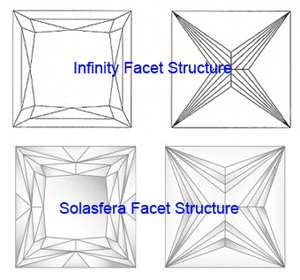ChunkyCushionLover
Ideal_Rock
- Joined
- Jun 21, 2009
- Messages
- 2,463
Karl,Date: 5/19/2010 7:58:17 PM
Author: Karl_K
this one is much better and the resulting ASET image is very close face up.
But the scan errors will show up more as it is tilted.
Viewing the face up ASET images side by side you would not be able to locate the scan error unless you blew it up full screen.
It is rare for us to request a .gem file normally we ask for just one static image (although I would ask for a .gem file more often now just to see what happens upon tilt).
Scan error will most often make the diamond look worse, it isn''t going to introduce a systematic positive bias, not much of an evil there.
I am comfortable with the vendor deciding if the simulated images look much worse than the photographed images and if a new scan should be taken.
It is in the interests of the vendor selling branded diamonds at a premium over unbranded to have the best images and scans available so that they can justify the premium price and educate consumers on the differences.
Am I worried about if the vendor selling unbranded diamonds will go to the same lengths to insure their images are up to the same standard? Not really it can only hurt the sales of these unbranded diamonds if they don''t.





300x240.png)